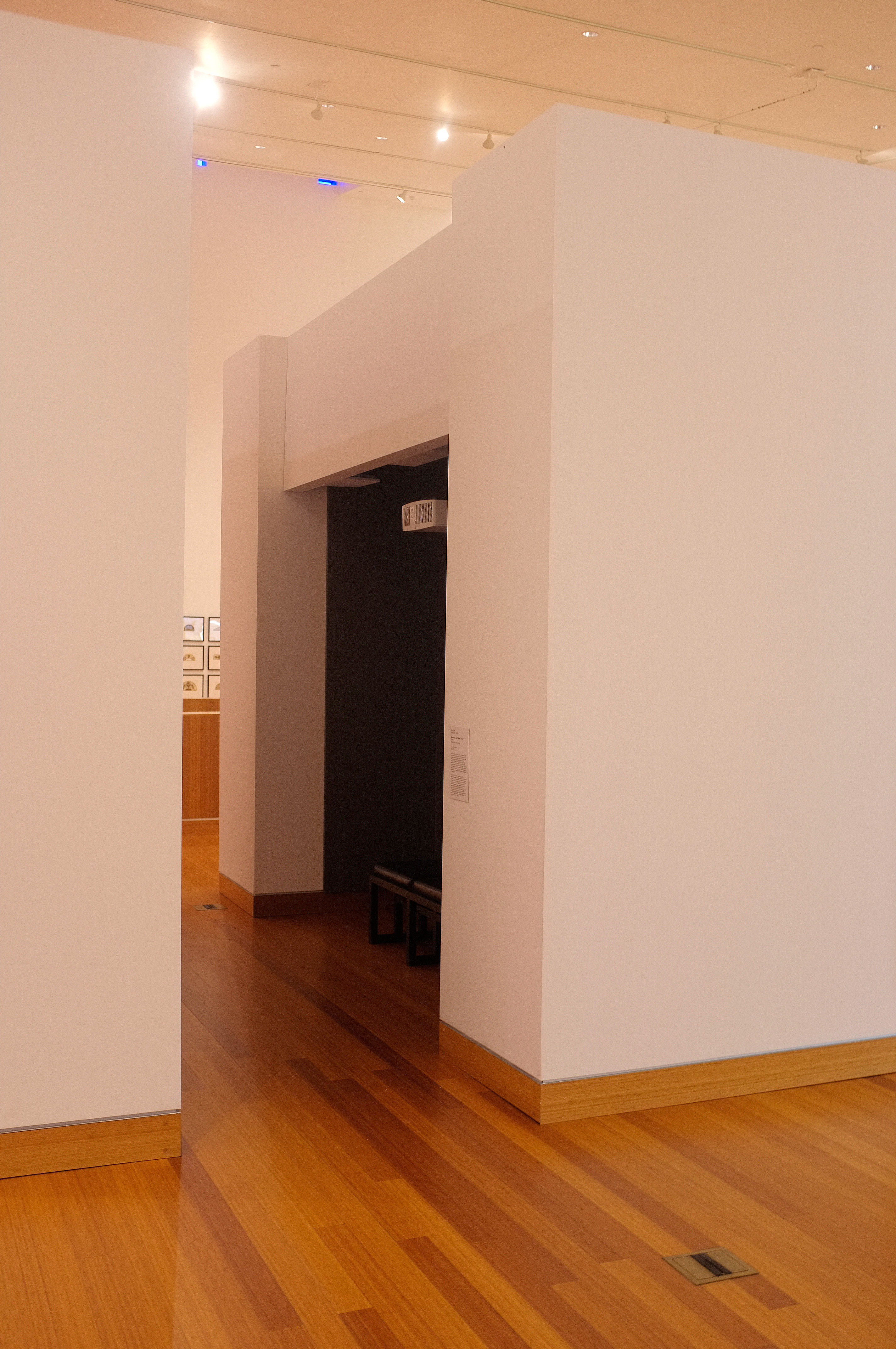Hauntology from Wes Kline on Vimeo.
Hauntology. 6:22. Digital video. 2005/2007
In the single channel video Hauntology (2005/2007) , I am shown dressed theatrically as the appearance of Nathan Leopold in 1924. Throughout the video, I echo/distort the historical description of Nathan Leopold’s avocation as an ornithologist, taking photographs of birds throughout the south Chicago swampland, near the Indiana border. Periodically, historically incorrect music stutters and emerges, including Chicago house music and selections from the culmination of Benjamin Britten’s chamber opera Turn of the Screw. Subtle suggestions of the possibility of violence towards an-other occur throughout the video, including color coding, and the repeated presence of a “broken” body half-submerged in the landscape.
The artist/Leopold figure figures as a sort of hybrid automaton, an extension of history, presentness, and technology. As much a multiplicity as the wolf-man (a figure that occurs in several other of my videos), he is the I writing this, possessing the ghosting of Nathan Leopold; he is the surface of theatricality that haunts the apparition of the artist; he is the revisitation of history, figured as a sideways glance across. In other words, this is not history moving on a grand scale, or on any scale at all, but rather a conflation of events (timings), language, and surfaces, seeking to undermine the particular object, and provide a multiple image-object that flattens as it expands. This expansion might concurrently question and invoke the historicizing arc of the narrative.
An image that is foregrounded in the video is the recurring/returning face of the artist/Leopold. This face is shown in the video in close-up, sometimes looking, sometimes singing, and always as a conjunction of surfaces. The face is covered in blue-white makeup that highlights its planar quality, both within the context of the presentation of the video (as video-object), and in its vertical, synchronic relationship of individual and culture (it becomes both a specific and a generic presentation). Deleuze highlights this concept of “faciality,” writing “Faces are not basically individual…the face constructs the wall that the signifier needs in order to bounce off of; it constitutes the wall of the signifier, the frame, or screen…it constitutes the black hole of subjectivity as consciousness or passion, the camera, the third eye.” The appearance of the face is the reiteration of the camera – the frame, or screen, through which objects themselves appear. It becomes a libidinal site of absorption for both the viewer and the image, recalling C. S. Lewis’ idea of lovers moving “face to face.”
One of the ideas that seemed particularly resonant in the character Nathan Leopold and his situation is his connection to visuality and the landscape. The landscapes of Leopold are many, and are ravaged and silent. He is a site of visuality as an object in a spectacular tableau – the “crime of the century ”, and subsequently, as an elided but constantly observed object – the prisoner in Stateville penitentiary, in Joliet, IL. Throughout his trial, the “appearance” of both he and Richard Loeb was highlighted, as their impeccable dress was described in detail throughout news accounts. His defense by Clarence Darrow in the criminal trial rests on a reiterated story – that Leopold lost the eyeglasses (glasses that were particular to him, and signified his presence) that were found near the body while he was birding. Glasses and camera, fashion, cruising for victims, and surveillance in prison - looking and enacted looking pervades this node of the historical system.
Leopold is the recipient of looking, and is therefore constituted as landscape object by these looks. As Julian Thomas notes, the “principal determinate of landscape art is the look,” continuing, “the viewer is so often associated with reason and culture, while the viewed object takes on the characteristics of passive nature.” Leopold (and his narrative) assumes many characteristics actively disposed against culture and reason, namely, the violent murder of Bobby Franks. This possibility of violence against others, of an extinguishing of the individual (accomplished through another technology – the cruising automobile, and deposited in another – the concrete culvert), seems, on its surface, like a site of radical departure from the Enlightenment understanding of ethics and sociability (the individual within nature and culture). However, this video seeks to allow for an opening that parallels the action of looking and the hierarchies of dominance suggested by scientific observation and moving through the landscape.


Installation view at Harn Museum, University of Florida.